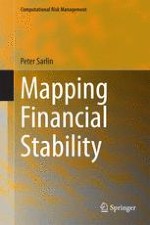2014 | OriginalPaper | Buchkapitel
5. Data-Dimension Reductions: A Comparison
verfasst von : Peter Sarlin
Erschienen in: Mapping Financial Stability
Verlag: Springer Berlin Heidelberg
Aktivieren Sie unsere intelligente Suche, um passende Fachinhalte oder Patente zu finden.
Wählen Sie Textabschnitte aus um mit Künstlicher Intelligenz passenden Patente zu finden. powered by
Markieren Sie Textabschnitte, um KI-gestützt weitere passende Inhalte zu finden. powered by
